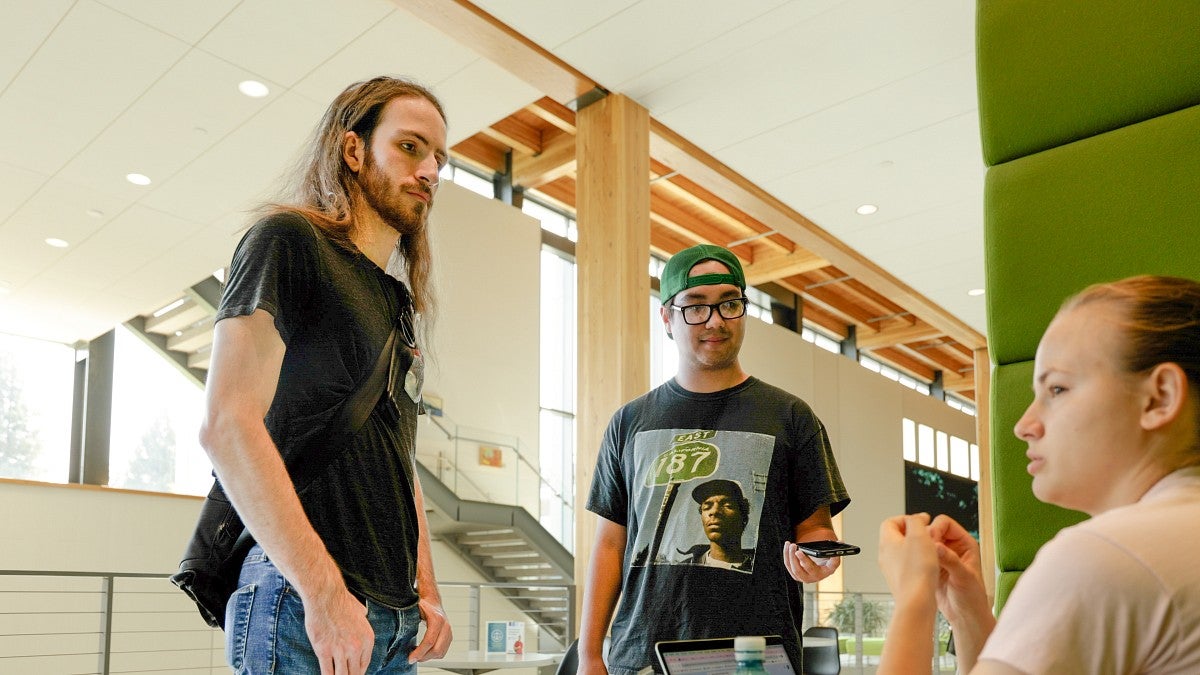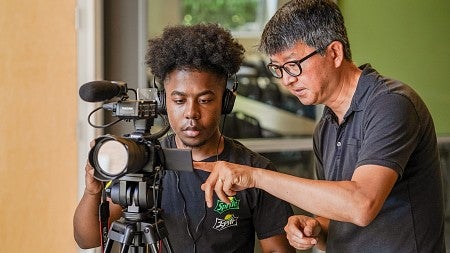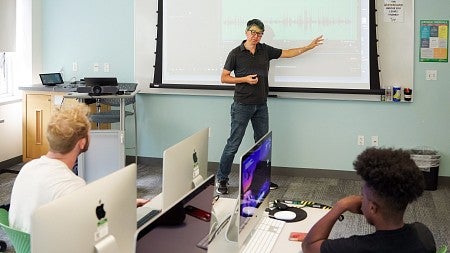
I wasn’t sure what to expect from J-508 Visual Studies Journalism when I first heard about it. It had been pitched as a summer class to get me ready for the Journalism Master’s program I was scheduled to begin in fall ’23.
In my mind that meant a bit of a light refresher to get back into things, something easy. I had taken visual journalism classes in my undergraduate program, even ones taught by J-508 instructor Sung Park, so I felt it would be a “no-sweat” class before the program started properly.
What I wasn’t expecting was a tough, compact course to get everyone up to speed on photo, audio and video storytelling. It’s 11 weeks of work condensed into four, and that meant getting out on the street and doing the real work, talking with strangers and putting together visual packages on tight deadlines.
I’d be lying if I said I wasn’t nervous coming out of that first class, worrying about how I was going to get it all done. Now, looking back, I couldn’t be happier with how the course was laid out and everything that I accomplished.

Out of my comfort zone
During my undergrad studies, one of the main reasons I selected journalism as a major was to help me break out of my shell. I’d always had social anxiety, and my thought at the time was that taking courses where I was forced to meet and talk with people would help correct that. It proved to be true and has been especially true of J-508.
Given the short, fast-paced nature of the class, you need to be on the ball when finding people to do stories on. It was that quick pace that really allowed me to benefit the most from the class. By not having time to overthink projects, I was forced to take risks and trust my judgments to succeed. And when those risks led to success for a project, it made me feel better about my abilities as a journalist and added to my confidence for the future.
Finding your story
The curriculum of the class focuses on three main pillars of storytelling: photo, audio and video. Senior Instructor Park assigned multiple photo assignments, a short audio story and a multimedia package that married the two elements together. You could choose whichever subject you wanted, so long as you kept to one of the most important rules of visual journalism: Make sure it’s interesting to look at.
For me, that meant walking and biking around, keeping an eye out for interesting people and things that made my head turn. That method allowed me to find and document many people involved in visually interesting tasks, from street musicians to the owner of a local frame shop. It wasn’t always easy, and I was rebuffed several times, but I always found a good story to tell. In all cases, the people were already there — I just had to find them.

Tools of the trade
I’ll be straightforward and admit that some of the tools you use in visual journalism can be intimidating. I remember that when I was starting out, the Adobe Creative Suite programs seemed very complicated. The cameras we used in the class had almost too many settings to manage to get a good shot. Coming into visual studies, I already had some experience under my belt, but it had been a long time, and I had forgotten a lot of things.
Thankfully, the class acted as a great refresher for me. In those four weeks, I was able to relearn all the basics I needed to take, edit and publish high-quality photos and audio elements. I feel confident that I could take future visual journalism classes and really know what I’m doing when it comes to the equipment side of things.
Ultimately, I got real experience in the class. It wasn’t just some theory class or one where you spend all day in the lab. I got to go out and challenge myself, meet and talk with interesting people, and create work that I’m proud of. I think that it really set the tone for my program, got me off to a good start and resulted in a final project I’m proud of.
See Bart's Final ProjectBart Brewer ’24 is a Journalism Master’s student at the University of Oregon. He edits the online newsletter for NAMI Clackamas and hopes to find a writing position post-graduation.
